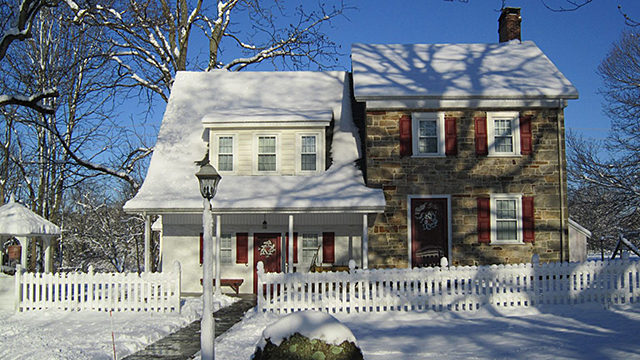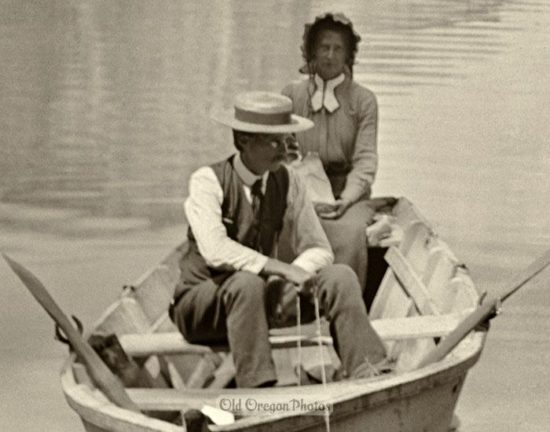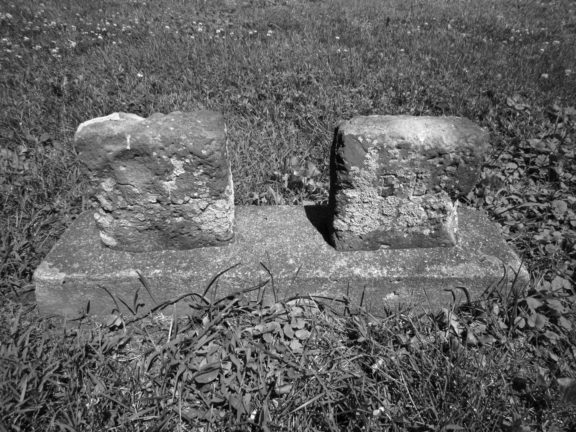
This is part II of our story about a Quaker farm and Meetinghouse in Quakertown, NJ. We share this with thanks to Quakertown attender and farm owner, Marty Campanelli. Marty is writing about the farm she inhabits and the Meeting she attends.
Marty begins where she left off last week, with the Allen and Laing family farm on the outskirts of Quakertown, NJ.
Think back to the first part of the 19th century. It was a time of horse drawn carriages, coal-fired factories, steam engines, and the birth of the railroads…
A Farm and a Meeting
The members of the Allen and Laing families who resided at the farm near the edge of Quakertown were active Friends in the Meeting. John Allen served on several committees, as did his son-in-law, David Laing (married to the Allens’ daughter Elizabeth).
John Allen’s grandson, John A. Laing, was born in 1824, and became a schoolteacher. He stayed close to home and taught in several of the one-room schoolhouses in the township. He and his sister, Rachel, lived on the Allen-Laing farmstead into old age. Rachel died in 1876 and John in 1901.
The farm changed hands, but not families. A number of nieces, nephews, grandnieces and grandnephews were willed the property. One grandnephew, Willis W. Vail, bought them all out.

A photographer, traveler, and diarist, Willis was an absentee owner, due to working in Virginia and points south as a surveyor/civil engineer for railroad companies. The railroads provided critical access to the coal mines that powered America’s industrial revolution. Willis had grown up a few doors from the Meetinghouse in Quakertown, attended Swarthmore, and identified as a lifelong Friend. Willis’s father and uncles served as trustees of the Meeting, and some also served as clerks.
From the late 1800s on, a local farmer and his wife who resided with Willis’ great uncle, John A. Laing, took care of the farm, and probably looked after John as well. When Willis acquired the property, he retained the farmer to run the farm in his absence.
A Marriage and a Quakertown Homecoming
Having done well for himself as an engineer, Willis Vail retired in 1922, when he was in his mid-50s. He fell in love and married, bringing his bride home to Quakertown from Virginia. He renovated the circa 1765 cottage section of the farmhouse, added a second floor and set about caring for the now vacant Meetinghouse in Quakertown center. The Meeting itself had been laid down in about 1905.
Starting in 1926, Willis decided to open the Meeting once a year in September, inviting Friends from all over New Jersey and Pennsylvania to visit. He advertised the opening in Hunterdon papers, extending an open invitation to attend to local acquaintances and neighbors of many religious persuasions.
Willis obtained guest speakers and had his Boy Scout troop help with serving coffee, refreshments, and open-ended hospitality. In addition, he worked with the scouts to clean up the cemetery behind the Meeting, cutting the grass, pulling up sunken gravestones, and setting them upon new cement bases.

The Allen, Laing, and Vail families, plus other relatives, are all buried near the meeting.
Willis employed his surveying knowledge to execute a complete survey of the cemetery stones as well as create a transcription of all inscriptions, teaching his scouts these skills along the way. He also fixed the Meetinghouse roof and did all sorts of maintenance and repairs to the building and grounds.
Most of the inscriptions on the stones he transcribed are too weathered to read today, but there is a touching memorial to two Laing twins, buried side by side. In The Kingwood Records by James W. Moore, these twins of David and Elizabeth Laing “departed within half an hour of each other with the sore throat and fever” on the 15th day, 2nd month 1835.
We know so much about Willis’s activities regarding Quakertown Meeting from diaries he kept. Those covering the years from 1887 to 1950 still exist and were recently gifted to the Meeting.
A Kind Man leads a Community to Reopen
Reports from the time describe Willis as a kind man, beloved by the community. He mentored young men in the village, served on the school board, and was known for lending a hand to those in need.
In 1950, a year before his death, Willis met with some people interested in starting up the Meeting. By 1957, Quakertown Monthly Meeting was reopened as an ‘indulged Meeting under the care of Bucks Quarter’, and a year later they hosted a memorial service for Willis W. Vail, that drew attendance from the whole community.
New Owners
Eventually, the house changed hands again and that’s where Marty and Dan Campanelli come into this story.
When my late husband Dan and I found out about all (that) Willis Vail had done in his lifetime, we were proud to be living in his former home, and decided to carry on his work by helping to restore stones in the Meeting’s cemetery, and assisting the members of the Meeting with various historical projects. Dan was a watercolor artist and after doing a painting of the Meetinghouse, he produced an edition of prints for them to sell as a fundraiser.
With thanks to Marty Campanelli, Quakertown Meeting Attender.
In the next issue, read how the farm’s legacy continues to link to Quakertown Monthly Meeting.